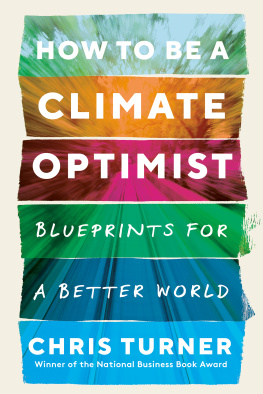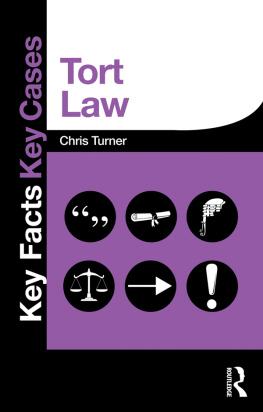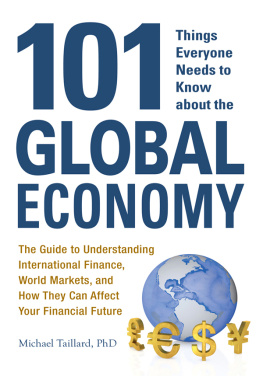Thank you for downloading this Simon & Schuster ebook.
Get a FREE ebook when you join our mailing list. Plus, get updates on new releases, deals, recommended reads, and more from Simon & Schuster. Click below to sign up and see terms and conditions.
CLICK HERE TO SIGN UP
Already a subscriber? Provide your email again so we can register this ebook and send you more of what you like to read. You will continue to receive exclusive offers in your inbox.
We hope you enjoyed reading this Simon & Schuster ebook.
Get a FREE ebook when you join our mailing list. Plus, get updates on new releases, deals, recommended reads, and more from Simon & Schuster. Click below to sign up and see terms and conditions.
CLICK HERE TO SIGN UP
Already a subscriber? Provide your email again so we can register this ebook and send you more of what you like to read. You will continue to receive exclusive offers in your inbox.
ALSO BY CHRIS TURNER
How to Breathe Underwater: Field Reports from an Age of Radical Change
The War on Science: Muzzled Scientists and Wilful Blindness in Stephen Harpers Canada
The Leap: How to Survive and Thrive in the Sustainable Economy
The Geography of Hope: A Tour of the World We Need
Planet Simpson: How a Cartoon Masterpiece Documented an Era and Defined a Generation

Simon & Schuster Canada
A Division of Simon & Schuster, Inc.
166 King Street East, Suite 300
Toronto, Ontario M5A 1J3
www.SimonandSchuster.com
Copyright 2017 by Chris Turner
All rights reserved, including the right to reproduce this book or portions thereof in any form whatsoever. For information, address Simon & Schuster Canada Subsidiary Rights Department, 166 King Street East, Suite 300, Toronto, Ontario, M5A 1J3, Canada.
This Simon & Schuster Canada edition September 2017
SIMON & SCHUSTER CANADA and colophon are registered trademarks of Simon & Schuster, Inc.
For information about special discounts for bulk purchases, please contact Simon & Schuster Special Sales at 1-800-268-3216 or .
Jacket image Shutterstock
Library and Archives Canada Cataloguing in Publication
Turner, Chris, 1973, author
The Patch : the people, pipelines and politics of the oil sands / Chris Turner.
Issued in print and electronic formats.
ISBN 978-1-501-11509-7 (hardcover)
ISBN 978-1-501-11511-0 (ebook)
1. Oil sands industrySocial aspectsCanada. 2. Oil sands industryPolitical aspectsCanada. 3. EnvironmentalismCanada.
I. Title.
HD9574.C22T87 2017 333.8'2320971 C2017-901922-8 C2017-901923-6
ISBN 978-1-5011-1509-7
ISBN 978-1-5011-1511-0 (ebook)
For Sloane and Alexander, two children of Alberta
The fifth freedom, the Freedom of Individual Enterprise, is the keystone of the arch on which the other Four Freedoms rest. This is what freedom means.
Nicholas Murray Butler, President of Columbia University, 1943
There are strange things done in the midnight sun
By the men who moil for gold
Robert W. Service, The Cremation of Sam McGee (1907)
CONTENTS
PROLOGUE
DUCKS ON A POND
The North American Central Flyway exists primarily as a collective instinct in the minds of millions of migratory birds. Whooping cranes and piping plovers, bald eagles and brown pelicans, mallard ducks and Canada geesein twos and fours, in dozens and scores and vast flocks of thousands, all of them follow the same general path from winter nest to summer breeding grounds and back again each spring and fall.
The flyway is a vestige of the last Ice Age, when glaciers spread far south over the wide flat centre of the North American continent. The ice sheet isolated birds to the east and west, where they developed migratory routes on either side. When the glaciers retreated, they carved thousands of ponds and lakes into the prairie. Waterfowl and other migratory birds soon returned to the region, following food and sanctuary north and south along this newly thawed route. It stretches today from the Gulf of Mexico in the south to the Mackenzie Delta on the Arctic Ocean in the north, and it provides habitat and sustenance for millions of birds.
In April 2008, obeying those ancient instincts, in response to spring warmth and melting ice, ducks took flight from ponds across North Americas broad plains. They had wintered in North Dakota and Minnesota, on frigid but unfrozen bodies of water in southern Saskatchewan and British Columbia and on rivers like the North Saskatchewan that cut across central Alberta. They flew north hard and fast, stopping at newly thawed open water along the way to feed. They flew as fast as sixty miles per hour at times, perhaps a thousand feet in the air. In less than a week, thousands of them had reached Albertas boreal forest, bound likely as not for the nesting and feeding grounds of the Peace-Athabasca Delta, a waterfowl habitat as bounteous and expansive as the Mississippi.
The flyway had been there before there were roads and rails below, before there were cities and towns, before there was industry. The ducks followed a path older than the farms beneath them in southern Saskatchewan, older than the coal mines they passed over in Albertas Badlands. Their route predated the internal combustion engine, the pumpjack, and the ingenious two-cone rotary rock drill bit. It was there before the Cree moved west to find fur for trade, before the peoples of the Peace-Athabasca Delta named their homeland Denendeh, perhaps before any Homo sapien had crossed from Asia onto the American land mass. Each spring, as days light stretched into evening and the breeze turned warm, the ducks came north, alighting on thawed ponds to rest and eat before proceeding farther north to the delta to find mates and make nests. And then there would be more ducks to repeat the flight, year upon year, until the ice sheets returnan eventuality well beyond the ken of any duck.
On April 20, 2008, as sometimes happens in the boreal forests of northern Alberta in spring, snow began to fall. Along the banks where the great Athabasca River makes its final hard turn north toward the delta, the snow that day fell in a formidable blizzard. It stormed for three days, and nearly half a metre blanketed the river banks and the forests of pine and spruce and the lakes and ponds strewn across the landscape east and west of the river.
The weather troubled the ducks. The low cloud made it hard to navigate, and the new snow and cold air made open water scarce and harder to spot. Sometime in the evening of April 27 or in the warming dawn of April 28, many flocks of themmallards, mostly, but also quite a few mergansers, a smattering of other breedsfound a pond in the middle of a broad stretch of treeless ground. They came in one after the other, each chasing the next down onto the dark calm surface of the water. And one after another, they discovered a strange substance floating on the ponds surface, a thick dark goo the likes of which they had never encountered before. It was native to the region, but it belonged properly to the hidden depths of soil and sand deep beneath the boreal forest floor. It had no place in the flyways ponds a thousand years ago, and it was scarce enough even ten years back that no flock of ducks had ever collided with it in such numbers.
Next page














